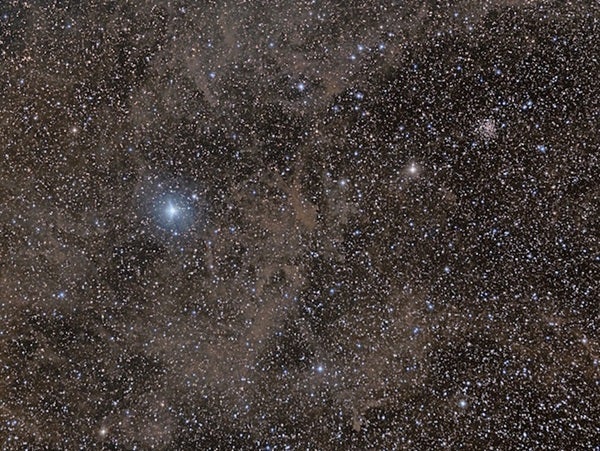Watauga, Texas
A: If conditions are just right, you can see Polaris from just south of the equator. To find out how far south, let’s first set a few ground rules. We’ll assume a hypothetical skygazer viewing from sea level with a perfectly flat horizon toward the north. And we’ll further assume ideal sky conditions that allow our observer to see a 2nd-magnitude star (like Polaris) right on the horizon.
Although Polaris is also known as the North Star, it doesn’t lie precisely above Earth’s North Pole. If it did, Polaris would have a declination of exactly 90°. Instead, our navigational beacon currently has a declination of 89.34°. The difference, 0.66°, would be Polaris’ peak altitude if viewed from the equator, and the latitude south of the equator from which the star would scrape the horizon — if Earth had no atmosphere. But our blanket of air refracts starlight, causing an object near the horizon to appear higher than it really is. Under typical atmospheric conditions, this adds 0.57° to an object’s altitude, so Polaris would barely show up from 1.23° south latitude.
But all this assumes you’re viewing in 2018. The gravitational pulls of the Sun and Moon cause Earth’s axis to precess slowly. During a 25,800-year cycle, the position of Earth’s axis in space traces out a 46.88°-wide circle on the sky. In 12,600 years, Polaris will reach its lowest declination of 44.62°. At that time, Polaris will be visible anywhere north of 45.95° south latitude (90°–44.62°+0.57°), and our current “North Star” will grace the skies above all of Africa and Australia.










